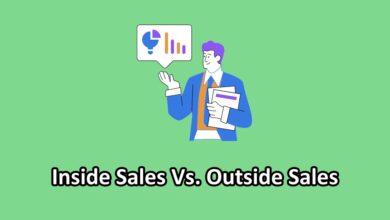In the fast-paced world we live in, the ability to anticipate future events has become more crucial than ever. Imagine being able to predict market trends, weather patterns, or even the outcome of a critical business decision.
This article delves into the intriguing realms of forecasting and prediction, unlocking the secrets that empower us to peek into the future.
Forecasting involves analyzing historical data and patterns to make informed projections about future trends. On the other hand, prediction relies on a combination of data and intuition to estimate the likelihood of specific outcomes. While both are tools for foresight, they have unique characteristics and applications that set them apart.
Forecasting Vs. Prediction (A Comparison)
| Forecasting | Prediction |
|---|---|
| Forecasting involves analyzing historical data and patterns to make informed projections about future trends. | Prediction relies on a combination of data and intuition to estimate the likelihood of specific outcomes. |
| It relies on historical data and quantitative analysis and involves examining past trends/patterns to make assumptions based on statistical models and data-driven insights. | It incorporates intuition and qualitative factors and goes beyond data, considering subjective insights and non-quantifiable elements alongside historical information. |
| Forecasting aims for objectivity in minimizing human bias and relying on quantitative methods for making predictions. | Prediction acknowledges the role of personal perspectives, emotions, and qualitative factors, introducing a level of subjectivity into the forecasting process. |
| It tends to be more rigid, and follows established models and structures, making it less adaptable to changing circumstances. | It allows for flexibility by considering a broader range of factors, making adjustments based on evolving situations, and incorporating insights beyond historical data. |
| Forecasting is commonly used in business and financial contexts, relying on historical data to make informed decisions. | It is applicable in diverse areas, encompassing personal choices, expert opinions, and scenarios where intuition plays a crucial role beyond purely data-driven domains. |
| Forecasting typically concentrates on predicting outcomes within a relatively near timeframe, such as weeks, months, or a few years. | Prediction is not constrained by a specific time frame, allowing it to encompass both short-term and long-term scenarios. |
What is Forecasting?
Forecasting is a systematic process of estimating future trends based on historical data and analysis. It involves identifying patterns, trends, and anomalies in datasets to make informed predictions about future events.
Businesses leverage forecasting to anticipate market demands, financial trends, and consumer behavior, enabling them to make strategic decisions.
Key Characteristics of Forecasting
- Data-Driven Analysis: Forecasting heavily relies on data analysis. By examining historical data, patterns, and trends, one can identify key indicators that shape future events.
- Quantitative Approach: Forecasting employs a quantitative approach, using statistical models and mathematical tools to make predictions. This ensures a systematic and objective analysis of data.
- Continuous Monitoring and Adjustment: Given the dynamic nature of markets and trends, forecasting requires continuous monitoring. As new data emerges, forecasts may need adjustments to maintain accuracy.
What is Prediction
Prediction is the art of estimating the likelihood of future events based on available information, intuition, and experience. Unlike forecasting, prediction often involves a more subjective interpretation of data, considering factors beyond numerical analysis.
Key Characteristics of Prediction
- Incorporation of Subjective Elements: Prediction involves a level of subjectivity, as it considers intuitive elements that may not be quantifiable. Human judgment and experience play a significant role in the prediction process.
- Flexible and Adaptive: Predictions often adapt to changing circumstances. The ability to adjust based on real-time information or unexpected events is a crucial characteristic of effective prediction.
- Utilization of Diverse Data Sources: Prediction draws on a wide range of data sources, including qualitative information and expert opinions, to enhance the accuracy of estimations.
Key Differences Between Forecasting and Prediction
- Data vs. Intuition: Forecasting relies on historical data and quantitative analysis, while prediction incorporates intuition and qualitative factors.
- Objectivity vs. Subjectivity: Forecasting aims for objectivity through statistical models, while prediction involves subjective elements and human judgment.
- Rigidity vs. Flexibility: Forecasting tends to be more rigid, whereas prediction is adaptable, considering changing circumstances.
- Scope of Application: Forecasting is prevalent in finance and business, while prediction spans various fields, including personal decisions and expert opinions.
- Time Horizon: Forecasting often focuses on the short to medium term, while prediction may extend to long-term scenarios.
Uncertainty and Risk in Forecasting and Prediction
Forecasting grapples with inherent uncertainties due to the unpredictable nature of future events. External factors, market volatility, and unforeseen events introduce elements of unpredictability, challenging the accuracy of forecasts.
Prediction, being more adaptive and subjective, acknowledges uncertainties by incorporating flexibility into the estimation process. Predictors often rely on scenario analysis and consider multiple outcomes to mitigate risks associated with uncertainty.
Uncertainty in forecasting may lead to suboptimal decision-making if not managed effectively. In contrast, prediction, with its adaptability, allows decision-makers to navigate uncertainties more dynamically, making it a valuable tool in complex and volatile environments.
Applications in Various Fields
How Forecasting is Commonly Used in Specific Industries
Forecasting is a linchpin in various industries. In finance, it aids investment decisions by predicting market trends. Weather forecasting is vital for disaster preparedness. In business, it guides inventory management, production planning, and overall strategy.
Examples of Prediction Applications in Different Fields
Prediction finds applications in personal decision-making, medical diagnosis, and expert opinions. It helps individuals make choices based on intuitive estimations, while experts use prediction to offer insights beyond quantifiable data.
Emerging Technologies and Trends
Artificial Intelligence (AI) and Machine Learning (ML) have revolutionized forecasting and prediction. These technologies process vast datasets at unprecedented speeds, enhancing the accuracy of predictions in fields such as finance, healthcare, and climate science.
Blockchain, big data analytics, and advanced simulation tools are emerging trends shaping the future of forecasting and prediction. These technologies offer new dimensions of data analysis, enabling more precise estimations and informed decision-making.
Conclusion
In conclusion, the dynamic interplay between forecasting and prediction unfolds a fascinating narrative of human attempts to unravel the mysteries of the future. While forecasting provides a solid foundation based on data-driven analysis, prediction adds the human touch, navigating uncertainties with adaptability and intuition.
As technology continues to evolve, the synergy between these concepts will undoubtedly lead to more accurate and nuanced glimpses into the future, empowering individuals and businesses to navigate the complexities that lie ahead.


